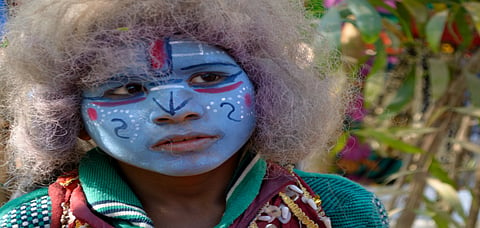
- Destinations
- Experiences
- Stay
- What's new
- Editor’s Picks
- Responsible Tourism
- CampaignsCampaigns
- Subscribe

Bahurupi is made up of two words, &lsquobahu&rsquo meaning many and &lsquorupa&rsquo meaning forms. The Bahurupi performers, as the name suggests, embody multiple characters found in Indian mythology. Although this folk performance is a one-of-its-kind, it has gotten lost in the crowd of many other emerging modern storytelling traditions.
The Performers
The Bahurupi performers hail from the Bedia tribe, primarily found in the eastern and northern parts of India. Traditionally, the Bedias used to be involved in hunting to earn their livelihoods, as unequal social practices governed by caste restricted them from practising other vocations like farming, weaving, etc. However, the new forest laws forced them to give up hunting and take up other practices like snake charmers, herbal medicine sellers, etc.
The Performance
How the Bahurupi performance came about is not very well documented. As per the limited information, the folk culture emerged when a guard from the Bedia tribe witnessed a stage performance by a trained actor who transitioned from one character to the next through makeovers. This is a feature that Bahurupi is known for as well&ndashthe performers physically transform into different characters through costumes, make-up, as well as in their movements, expressions, and language. The shift from exhibiting the character of Kaali to Durga, Shiva and other gods and goddesses is so seamless that the possibility of the audience noticing a lapse is next to none. Such is their skill as storytellers and shapeshifters.
Its Fading Glory
Although Bahurupi is rich in expression and a unique act that was once part of Bengal&rsquos popular culture, it is slowly dying. Many reasons play a role in its gradual disappearance from Bengal&rsquos map&ndash the foremost being the all-pervasive modern media and the consequent loss of income. These persisting issues have deterred the community&rsquos younger generation from taking the tradition forward. Their yearning for social mobility gives them no choice but to leave behind this distinctive culture for more stable, well-paid, and recognised professions.
